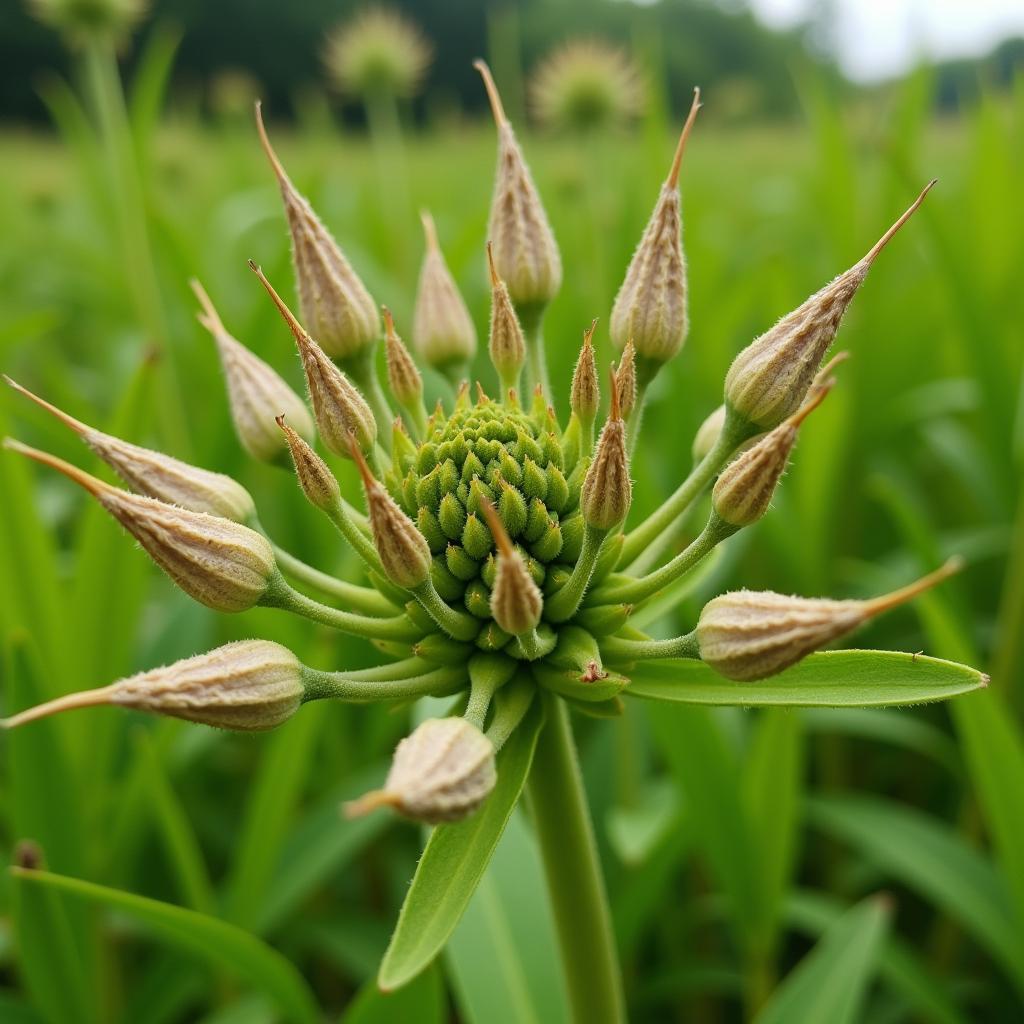Buckwheat has enjoyed a surge in popularity recently, praised for its nutty flavor and impressive nutritional profile. But as you sift through health food trends, you might wonder, “Is buckwheat paleo?” It’s a common question, especially for those dedicated to the paleo diet and its focus on foods our hunter-gatherer ancestors enjoyed. Let’s dive into the facts and explore buckwheat’s place in a paleo lifestyle.
Debunking the Grain Myth: What is Buckwheat, Anyway?
The confusion about buckwheat’s paleo status stems from its name. Despite the “wheat” in its name, buckwheat is not a grain like wheat, barley, or rye. Surprisingly, it’s not even related to these grains. Buckwheat belongs to the Polygonaceae family, making it a close relative of rhubarb and sorrel. This distinction is important because it means buckwheat is naturally gluten-free, a significant factor for those following a paleo diet for health reasons.
 Buckwheat plant and seeds
Buckwheat plant and seeds
The Paleo Diet: A Quick Refresher
The paleo diet emphasizes whole, unprocessed foods that our Paleolithic ancestors would have consumed, focusing on:
- Lean meats: Poultry, fish, grass-fed beef
- Fruits and vegetables: A colorful variety for optimal nutrients
- Nuts and seeds: In moderation, providing healthy fats
- Healthy oils: Olive oil, avocado oil
Grains, legumes, and processed foods are generally avoided due to their potential impact on blood sugar levels and inflammation. So, where does buckwheat fit in?
Buckwheat and the Paleo Debate
Here’s where things get interesting. While not technically a grain, buckwheat does share some characteristics with them, particularly its nutritional composition. Like grains, it’s a good source of carbohydrates.
Advocates for including buckwheat in a paleo diet point to its:
- Nutrient density: Buckwheat is rich in fiber, manganese, copper, magnesium, and iron, contributing to a well-rounded diet.
- High in antioxidants: It boasts a significant amount of antioxidants, potentially protecting against cell damage.
- Blood sugar control: Buckwheat has a lower glycemic index than traditional grains, meaning it has a milder impact on blood sugar levels.
However, those who strictly adhere to the paleo principles might exclude buckwheat because:
- It contains antinutrients: Like many seeds, buckwheat contains antinutrients, which can interfere with nutrient absorption. However, soaking or sprouting buckwheat can reduce these compounds.
- Its carbohydrate content: While lower than some grains, buckwheat still provides a significant amount of carbohydrates, which might not align with the macronutrient ratios some individuals strive for on a paleo diet.
Making an Informed Decision: Is Buckwheat Right for You?
Ultimately, whether or not to include buckwheat in a paleo diet is a personal choice. There’s no definitive “yes” or “no” answer.
“When deciding on any dietary approach, it’s essential to consider your individual health goals and preferences,” says Sarah Jones, a registered dietitian specializing in paleo nutrition. “Buckwheat can be a nutritious addition for some individuals following a paleo template, but it’s crucial to be mindful of portion sizes and any potential sensitivities.”
Listen to Your Body: The Bottom Line
The beauty of the paleo diet is its adaptability. If you’re considering incorporating buckwheat, start with small amounts and monitor how your body responds. Pay attention to any digestive discomfort, energy levels, or changes in your overall well-being.
Remember, the most successful dietary approach is one that supports your health and makes you feel your best.